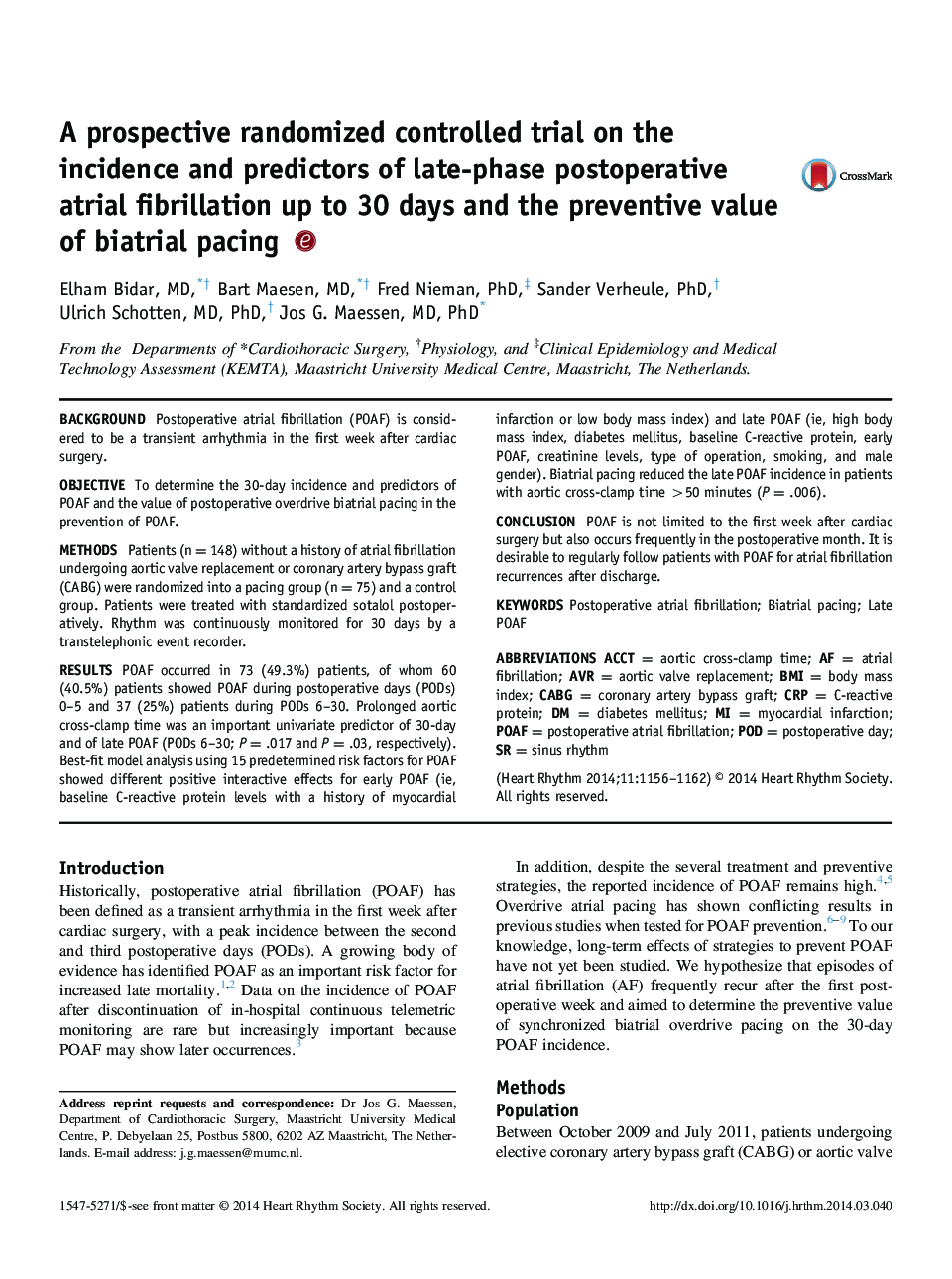| Article ID | Journal | Published Year | Pages | File Type |
|---|---|---|---|---|
| 2921993 | Heart Rhythm | 2014 | 7 Pages |
BackgroundPostoperative atrial fibrillation (POAF) is considered to be a transient arrhythmia in the first week after cardiac surgery.ObjectiveTo determine the 30-day incidence and predictors of POAF and the value of postoperative overdrive biatrial pacing in the prevention of POAF.MethodsPatients (n = 148) without a history of atrial fibrillation undergoing aortic valve replacement or coronary artery bypass graft (CABG) were randomized into a pacing group (n = 75) and a control group. Patients were treated with standardized sotalol postoperatively. Rhythm was continuously monitored for 30 days by a transtelephonic event recorder.ResultsPOAF occurred in 73 (49.3%) patients, of whom 60 (40.5%) patients showed POAF during postoperative days (PODs) 0–5 and 37 (25%) patients during PODs 6–30. Prolonged aortic cross-clamp time was an important univariate predictor of 30-day and of late POAF (PODs 6–30; P = .017 and P = .03, respectively). Best-fit model analysis using 15 predetermined risk factors for POAF showed different positive interactive effects for early POAF (ie, baseline C-reactive protein levels with a history of myocardial infarction or low body mass index) and late POAF (ie, high body mass index, diabetes mellitus, baseline C-reactive protein, early POAF, creatinine levels, type of operation, smoking, and male gender). Biatrial pacing reduced the late POAF incidence in patients with aortic cross-clamp time >50 minutes (P = .006).ConclusionPOAF is not limited to the first week after cardiac surgery but also occurs frequently in the postoperative month. It is desirable to regularly follow patients with POAF for atrial fibrillation recurrences after discharge.
